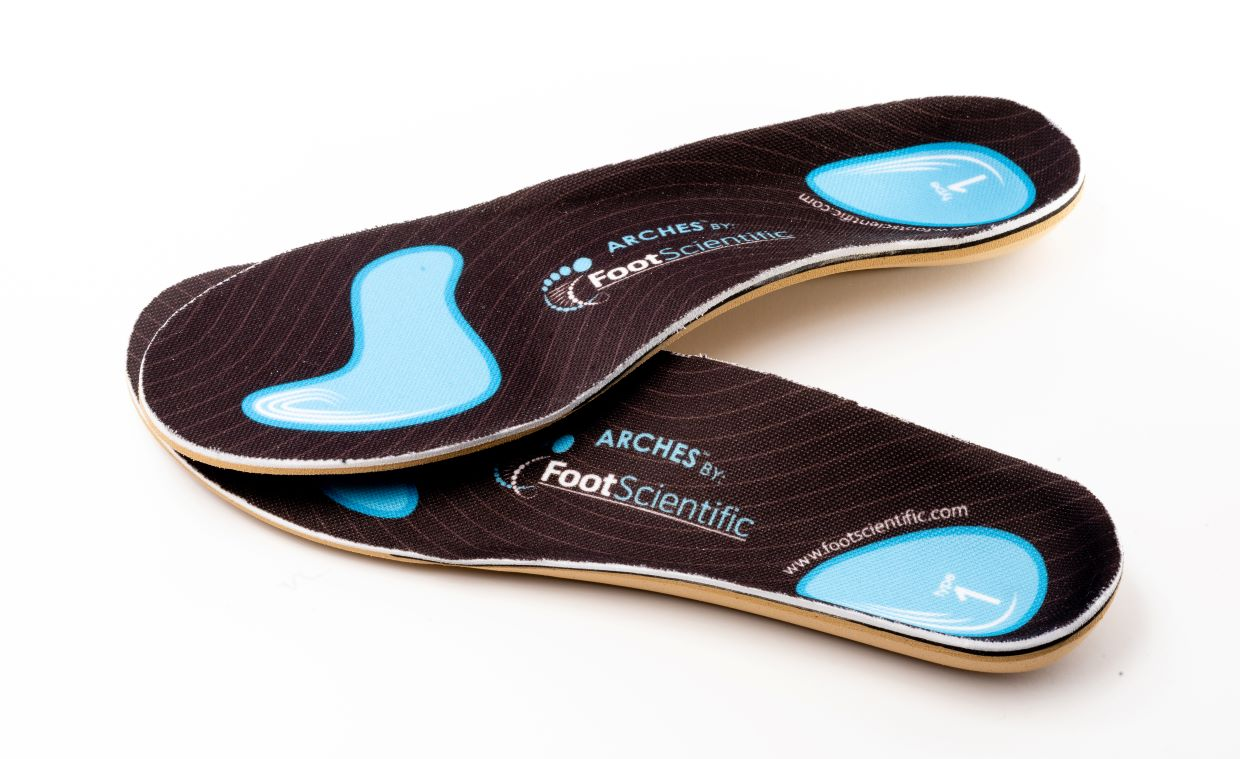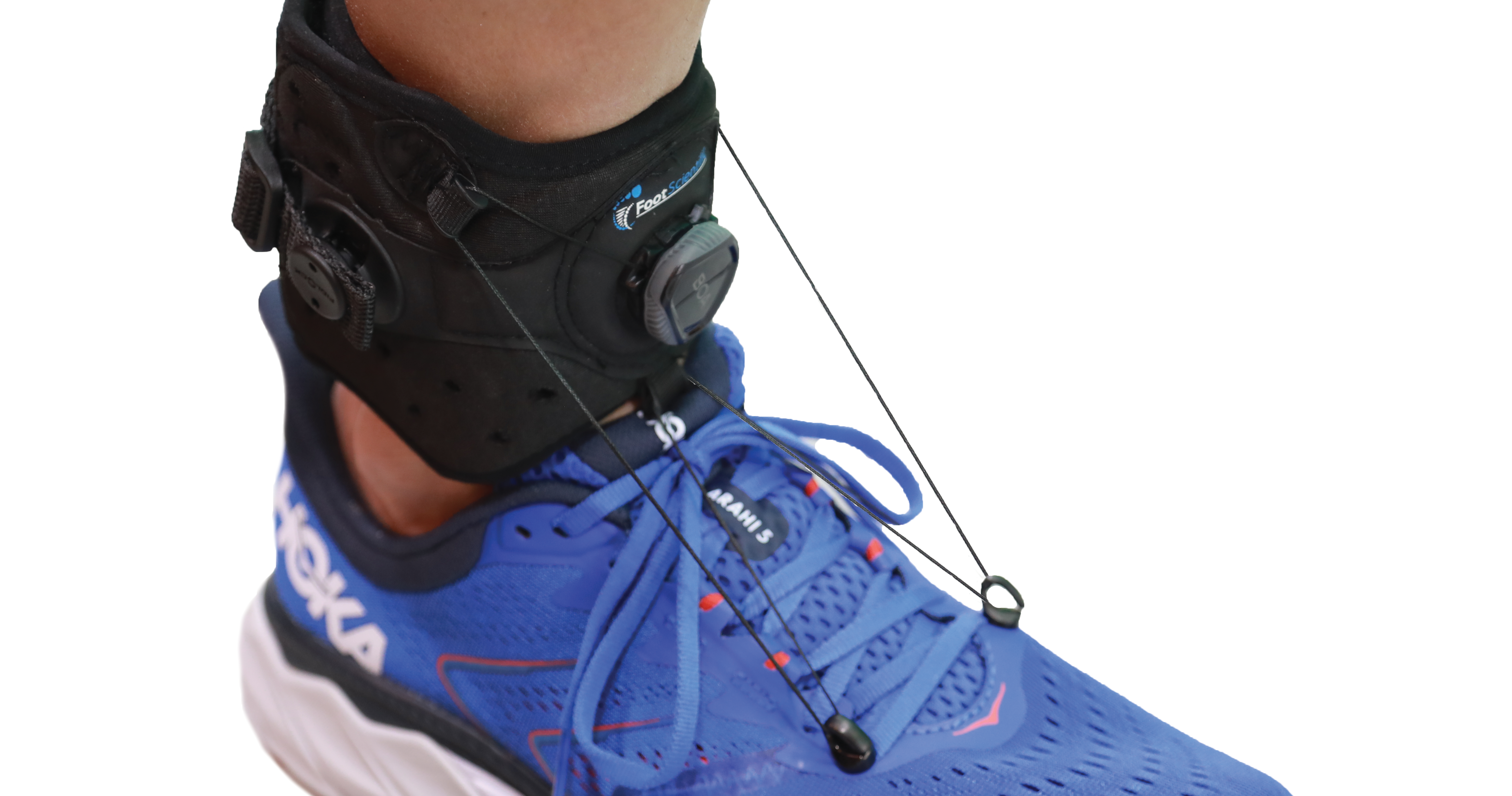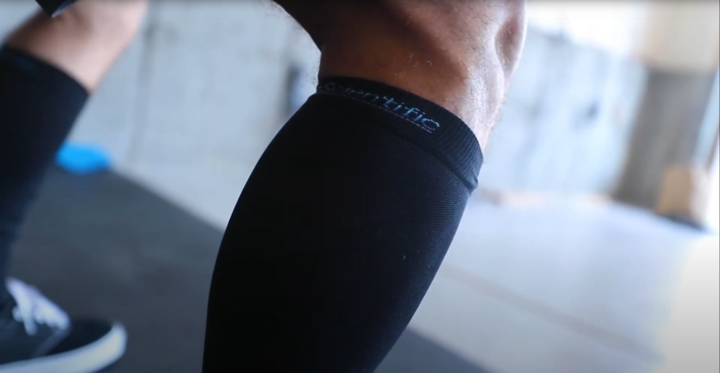FREE SHIPPING on orders over $99
For the best fit, if you’re between sizes, we recommend sizing up.
HSA Eligible - This item is eligible to accept HSA payment!
Arches® Orthotics Type 1 posts a corrective wedge, bringing the foot to a neutral position. This provides a stable foundation for your body and more efficient use of tendons and large muscles for a stronger off-step. Neutralizing the foot also takes undue pressure off the ankles and knees, ultimately affecting alignment in the hip and back. Our materials also absorb shock for all day comfort. Better than custom orthotics because Arches® allows your foot to fall comfortably into its corrected position.
- The Arches® line of Orthotics by FootScientific, demanded by collegiate and professional athletes for correction, comfort, and performance has been found equally effective for everyday use.
- Custom Orthotics that shapes to your foot (besides being expensive) show inferior outcomes for comfort and injury prevention to high-end prefab correction such as Arches®.
- Maintaining both comfort and correction over time is rare in corrective orthotics. Our primary material, a cork amalgam, facilitates this result.
What’s Your Foot Type?
Type 1: Pronating, Overpronating, Flat Foot, Fallen Arches
Type 1 is corrective for proper arch support: increasing comfort, promoting performance, and preventing injuries. Issues common to flat feet, such as plantar fasciitis, ankle and knee pain, or pain from undue pressure on the inside of the foot are relieved.
Most people know if they are pronating. If you are not sure, you will also find relief, comfort, and performance in the Type 2.
Type 2: Neutral Arch
Type 2 is for additional arch support, weight distribution off pressure points, and foot stabilization for a more responsive and comfortable foot.
Type 3: Supination, High Arch, High Rigid Arch, Cavovarus Foot , Inner Knee arthritis
Corrective for a more flexible foot, better pivot, minimizes outer-foot stress fractures and ankle rolling helps open space at the inner knee to lesson the pain of arthritis.
- Superior to Custom Orthotics: Your foot falls comfortably into Arches® patented corrective shapes.
- Keeping it Honest and Simple: Arches® understands that choosing an orthotic based on your foot-type is much more important than choosing an orthotic based on activities engaged.
- Designed for Power: The Arches® corrected foot transfers power to large muscle groups and away from injury and pain-vulnerable small muscles and tendons like the plantar fascia.
- Correction AND comfort: Not a gushy gel that feels good for 30 seconds, neither a rigid corrective base that hurts for 30 months. Our cork amalgam keeps its corrective shape while conforming comfortably and flexibly to your foot.
Before & After
Construction
Each pair of orthotics is designed with 4 layers.
- Form Correcting Molded Cork: allows for shock absorption, maintains the alignment, and maintains the correction of the orthotic
- Heel Stabilizing Padded Foam: stabilizes the heel, providing comfort and support
- Comfort Layer of EVA Foam: allows for persistent shock absorption and comfort of the wearer
- Stay Dry B.K. Mesh: works to control perspiration, odor control, and transitional cushioning
How to install your Arches Orthotics
Expert Insights from Dr. Rob Faux
Board-Certified Orthopedic Surgeon specializing in corrective foot biomechanics
If you're spending money on insoles, this difference could determine whether you actually fix your foot pain or just mask it temporarily.
Corrective orthotics use biomechanical wedging and semi-rigid materials to realign your foot structure during weight-bearing. Accommodative orthotics primarily cushion your existing foot position without structural correction.
Think of it this way: corrective orthotics are like physical therapy for your feet—they create lasting change. Cushioning insoles are like taking aspirin—temporary relief, but the problem remains.
How Corrective Orthotics Actually Work:
1. Medial/Lateral Heel Wedging (The Foundation of Correction)
The primary correction mechanism is controlling your hindfoot (rear of your foot). This is achieved by adding a ramp or wedge to either the inside (medial) or outside (lateral) edge of the heel.
For example, if you have flat feet (planovalgus deformity), your heel typically tilts excessively inward. A corrective orthotic adds material to the inside edge of the heel—usually 3 to 5 degrees—to counter this abnormal tilt and bring your heel back to neutral position. This immediately provides better balance and reduces strain.
For high-arched feet (cavovarus), the opposite occurs: the heel tilts inward toward the body's midline, requiring lateral (outside) correction.
2. Cork Amalgam vs EVA: Why Material Matters
Cork amalgam is generally firmer and better for heavier patients (over 200 lbs), providing more supportive control than EVA foam. Cork amalgam lasts significantly longer and works well for both custom and semi-custom orthotics. There's also a minor level of self-customization that occurs during wear over time—the material gradually conforms to your unique foot shape.
EVA foam allows for very rapid customization and accommodation in patients with problematic localized foot deformities. The goal with EVA is generally not aggressive correction, but rather reducing pressure areas and accommodating deformities to avoid skin breakdown. This material is especially helpful for diabetic and rheumatologic conditions where deformities are associated with peripheral neuropathy.
Why drugstore insoles "stop working" so fast: Pure foam compresses and loses 40-60% of its thickness with regular use, especially if you weigh over 150 lbs. Cork maintains its corrective shape for 18+ months.
3. Force Redistribution: The Domino Effect
Deformities of the hindfoot and forefoot create abnormal bending moments and eccentric stresses in your foot and ankle. Because your foot is the foundation and ground contact point, any misalignment creates painful strain in sensitive structures and can cause arthritis progression.
When your heel is properly aligned through corrective orthotics, your ankle, knee, and hip follow suit. This is why corrective orthotics often reduce knee pain, improve balance, and even help lower back discomfort—you've fixed the foundation.
Research-Backed Results:
- Systematic reviews show foot orthoses provide significant benefit for rheumatoid arthritis patients (Tenten-Diepenmaat M, et al., 2019)
- Lateral wedge insoles effectively reduce painful medial knee osteoarthritis (Felson DT, et al., 2019)
- Foot orthoses improve balance in older adults, reducing fall risk (Gross MT, et al., 2012)
How Arches Type 1 Applies This Science:
The Foot Scientific Arches Type 1 combines a cork amalgam base with an EVA top layer for gradual customization while maintaining control. Type 1 features a 3° medial heel post specifically designed for pronation correction, bringing the flatfoot to a neutral position and reducing strain on the plantar fascia and posterior tibial tendon.
This isn't custom-made-for-you expensive ($400+), but it uses the same biomechanical principles. You're getting professional-grade correction at a fraction of the cost.
Choosing the wrong orthotic type is like wearing the wrong prescription glasses—at best it won't help, at worst it creates new problems.
Pronation (flat feet), neutral, and supination (high arch) foot types each require specific corrective geometries. Comfort orthotics provide cushioning without structural realignment and won't fix biomechanical issues.
The 60-Second Self-Test:
Don't guess your foot type. Here's how to know for sure:
- Wet your bare foot
- Step on dry concrete or paper
- Look at your footprint
What you see:
- Full footprint without arch gap = Flat feet (Type 1 needed)
- Moderate footprint with visible arch = Neutral feet (Type 2 needed)
- Very narrow middle foot with only heel/ball contact = High arches (Type 3 needed)
Type 1 - Pronation/Flat Feet (What You Need)
Your symptoms: Inside ankle pain, arch fatigue, heel pain that's worse in the morning, plantar fasciitis in flat-footed individuals
What's happening: Your arch collapses with every step, overstretching your plantar fascia like pulling a rubber band too tight. Your heel tilts excessively inward (valgus), creating a domino effect of strain up your leg.
What you need: 3-5° medial (inside) heel posting to counter excessive valgus tilt. This brings your heel back to neutral and supports your arch.
Indicated for:
- Symptomatic flat feet
- Early/middle stage posterior tibialis tendinosis
- Midfoot arthritis
- Plantar fasciitis in individuals with flatfoot deformities
Type 2 - Neutral (Moderate Support)
Your symptoms: Ball of foot pain (metatarsalgia), general foot fatigue, plantar fasciitis without obvious flat foot, plantar plate injuries
What's happening: Your arch structure is relatively normal, but you need better shock absorption and pressure distribution. You're overloading specific areas without proper cushioning.
What you need: Moderate arch support without aggressive posting. Ideal for relatively neutral foot mechanics with cushioning and shock absorption for forefoot symptoms.
Learn more about Type 2 orthotics.
Type 3 - Supination/High Arch (Lateral Support)
Your symptoms: Outside ankle pain, recurring ankle sprains, lateral foot pain, peroneal tendon issues, Achilles problems
What's happening: Your rigid high arch doesn't absorb shock well. Your heel tilts outward, putting excessive pressure on the outside of your foot and making ankles unstable.
What you need: 3° lateral (outside) heel posting with first metatarsal relief. This addresses cavovarus foot deformity, recurrent ankle sprains, lateral ankle symptoms, and peroneal tendon pathology.
Learn more about Type 3 orthotics.
Why This Matters:
Same diagnosis (like plantar fasciitis), completely different treatments. A flat-footed person and high-arched person can both have heel pain, but they need opposite corrections.
Research confirms: Multiple studies show that matching orthotic type to foot structure significantly improves outcomes. Flat feet with medial posting show 75% reduction in pronation-related injuries. Proper foot-type matching reduces treatment failure rates by 50%.
Why Arches Type 1 for Flat Feet:
The Arches Type 1 orthotic features a 3° medial heel post that brings the pronated heel to neutral position, reducing excessive strain on the arch structures. This corrective geometry is specifically designed for individuals with flat feet who experience plantar fasciitis, posterior tibial tendon pain, or medial ankle/foot discomfort.
Still not sure? Beyond the wet test, other clues:
- Flat feet: Shoes wear on inside edge, you "roll inward" when walking
- High arches: Shoes wear on outside edge, frequent ankle sprains, calluses under ball of foot
- Neutral: Relatively even shoe wear, no major structural issues




